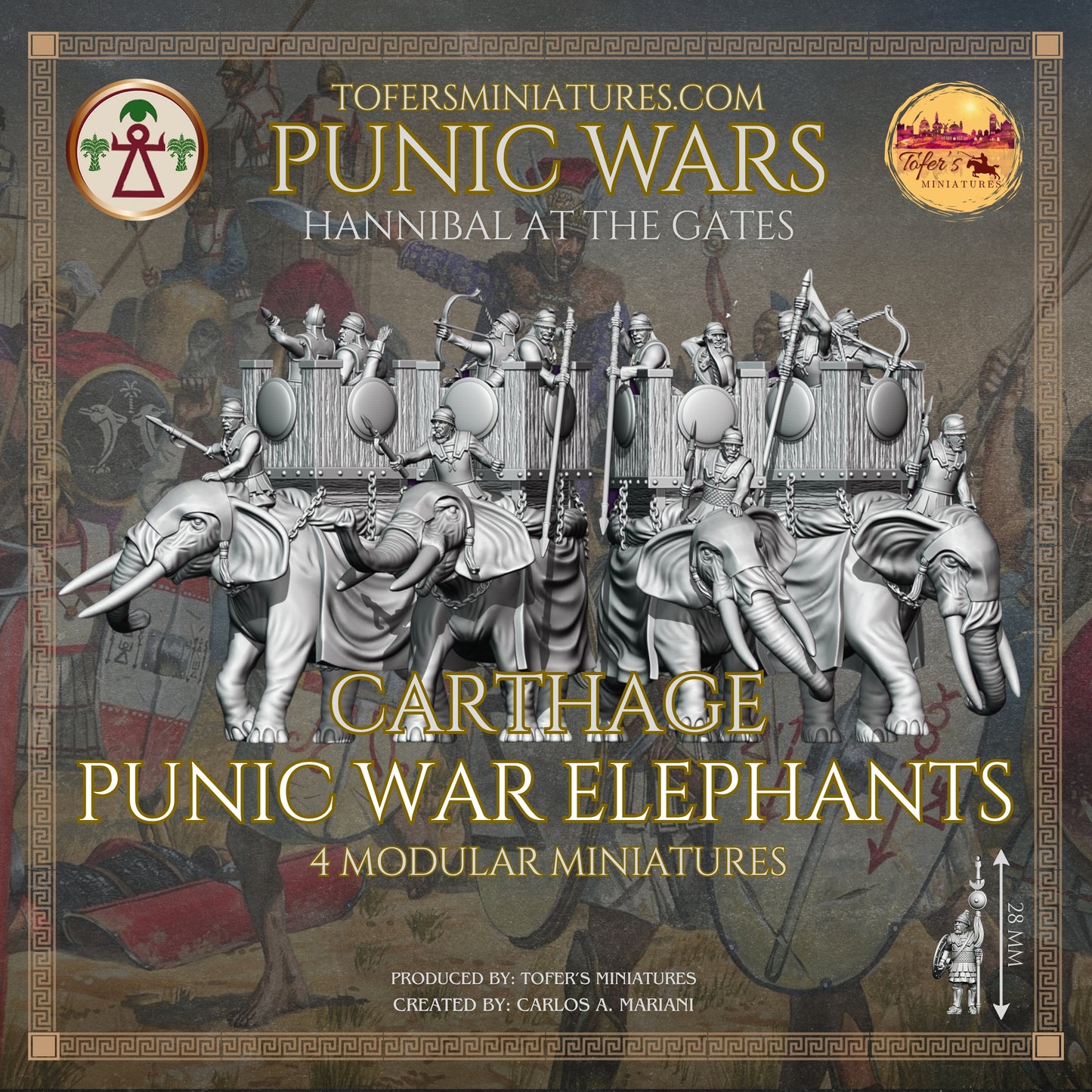My Store
Punic War Elephants
Punic War Elephants
Couldn't load pickup availability
This item is part of the “Punic Wars: Hannibal at the Gates” collection.
Carthage used armored war elephants as formidable shock troops, primarily during the Punic Wars against Rome. These beasts, equipped with armor and trained for battle, were intended to break enemy formations and terrify troops, but their unpredictable nature often made them a double-edged sword.
Species and equipment
Species: Carthaginian war elephants were primarily the now-extinct North African forest elephant (Loxodonta pharaoensis), which was smaller than modern African bush elephants. They may have also used some Indian elephants, possibly imported from the Hellenistic kingdoms.
Armor: These elephants were armored to protect them from attacks. In addition to protective padding or cloaks, their armor could include reinforced head and trunk coverings. Some larger elephants may have carried a howdah, or a fighting tower, with soldiers inside.
Crew: An elephant's crew typically consisted of two to four men. A mahout (driver) controlled the animal, and the rest of the crew were soldiers armed with javelins or spears.
Tactical use and effectiveness
Shock and terror: Carthaginian generals primarily used the elephants to charge enemy lines, causing chaos and panic. Their loud trumpeting, massive size, and aggressive charges could disrupt disciplined formations, especially infantry.
Counter-cavalry: Elephants were also highly effective at disrupting cavalry charges, as horses were often afraid of their scent and size.
Psychological warfare: The mere presence of elephants instilled fear in enemies unfamiliar with them, giving Carthage a significant psychological advantage.
Unpredictability: A major weakness of elephants was their tendency to "run amok" when wounded or frightened, trampling their own soldiers and causing friendly fire casualties. The Romans learned to exploit this by causing noise or wounding the animals from a distance.
Notable campaigns and battles
First Punic War: The Carthaginian elephant corps was a major force during this war. At the Battle of Tunis in 255 BCE, a charge of 100 elephants was instrumental in a decisive Carthaginian victory over the Romans.
Second Punic War: The use of elephants is most famously associated with Hannibal Barca.
Crossing the Alps: Hannibal began his legendary invasion of Italy in 218 BCE with a contingent of elephants. Though many perished during the harsh mountain crossing, the survivors gave his army a powerful edge.
Battle of the Trebia: The surviving elephants played a key role in this battle, further demoralizing and panicking Roman and allied troops. Most of the elephants died in the aftermath due to the freezing cold.
Battle of Zama: In Hannibal's final showdown with Scipio Africanus in 202 BCE, his elephant charge was effectively neutralized. The Romans blew trumpets to frighten the elephants and opened gaps in their formations, allowing the beasts to pass through harmlessly. After this crushing defeat, Rome imposed a treaty that forbade Carthage from keeping war elephants.
Punic War Elephants. Carthage. 28 mm Miniatures
Ideal for games like HAIL CAESAR, SAGA, and other wargames.
This set contains unpainted Punic War Elephants, crew, and bases.
Ideal for games like SAGA and other wargames.
Produced by Tofer's Miniatures
The model was designed by Carlos A. Mariani
Share


